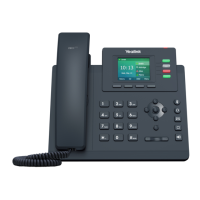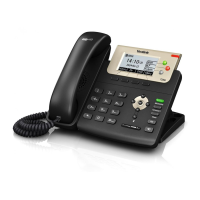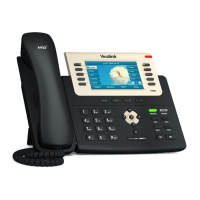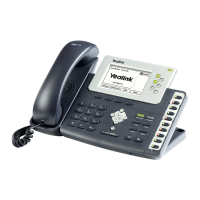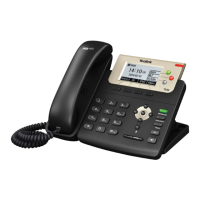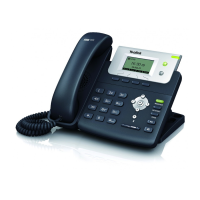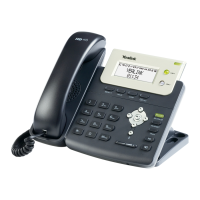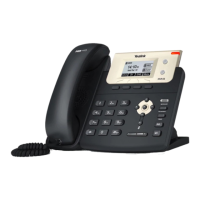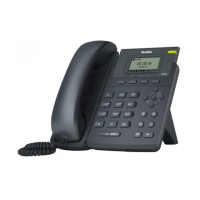Administrator’s Guide for SIP-T2xP and SIP-T19P IP Phones
184
NAPTR (Naming Authority Pointer)
First, the IP phone sends NAPTR query to get the NAPTR pointer and transport protocol.
Example of NAPTR records:
order pref flags service regexp replacement
IN NAPTR 90 50 "s" "SIP+D2T" "" _sip._tcp.yealink.pbx.com
IN NAPTR 100 50 "s" "SIP+D2U" "" _sip._udp.yealink.pbx.com
Parameters are explained in the following table:
Specify preferential treatment for the specific record. The order
is from lowest to highest, lower order is more preferred.
Specify the preference for processing multiple NAPTR records
with the same order value. Lower value is more preferred.
The flag “s” means to perform an SRV lookup.
Specify the transport protocols:
SIP+D2U: SIP over UDP
SIP+D2T: SIP over TCP
SIP+D2S: SIP over SCTP
SIPS+D2T: SIPS over TCP
Always empty for SIP services.
Specify a domain name for the next query.
The IP phone picks the first record, because its order of 90 is lower than 100. The pref
parameter is unimportant as there is no other record with order 90. The flag “s”
indicates performing the SRV query next. TCP will be used, targeted to a host
determined by an SRV query of “_sip._tcp.yealink.pbx.com”. If the flag of the NAPTR
record returned is empty, the IP phone will perform NAPTR query again according to the
previous NAPTR query result.
SRV (Service Location Record)
The IP phone performs an SRV query on the record returned from the NAPTR for the host
name and the port number. Example of SRV records:
Priority Weight Port Target
IN SRV 0 1 5060 server1.yealink.pbx.com
IN SRV 0 2 5060 server2.yealink.pbx.com
